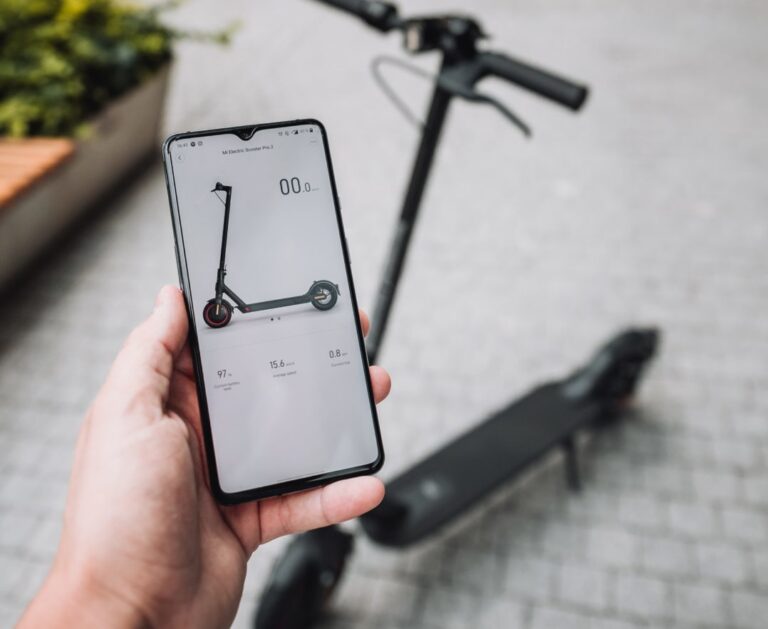Everything You Need to Know about Scooter Parking
When electric scooters first flooded the streets of seemingly every midsize to large city in the US, it was sort of a free for all. You could pick them up, ride them, and drop them off just about anywhere. But as cities and their inhabitants started getting frustrated with the carelessly discarded electric devices, a new set of regulations began getting introduced across the globe to dictate where scooters could be picked up, ridden, and parked.
These new regulations created an entirely new category of technology for scooter parking. From geofencing to sensors to in-app cameras – this is everything you need to know about scooter parking.
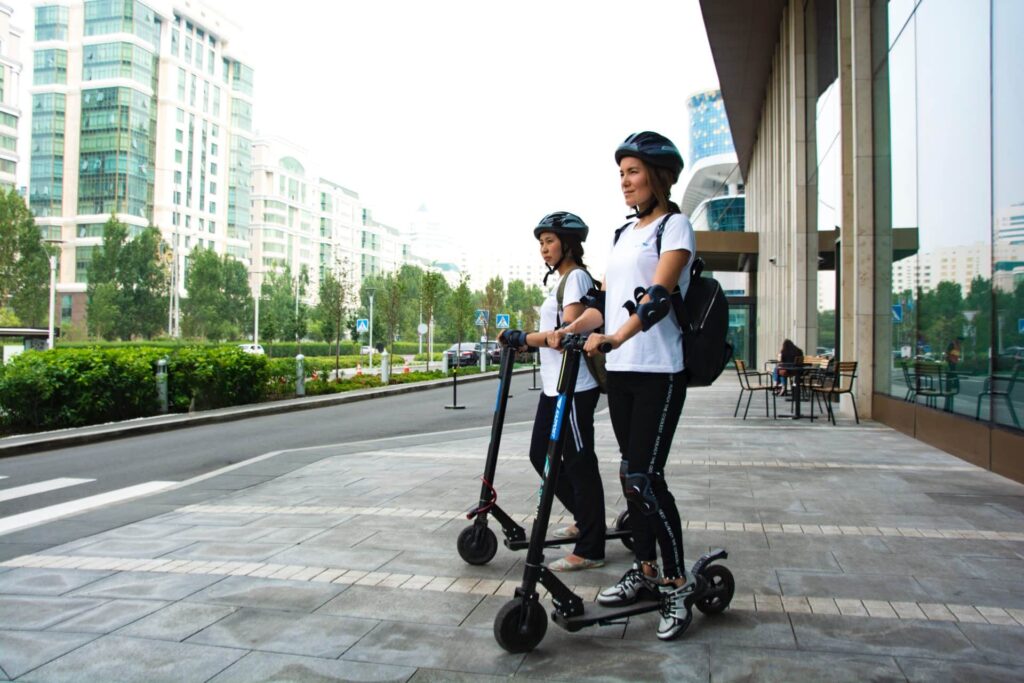
Where can you drive your scooter in the cities?
Where you can drive your scooter varies by city, but most places will have similar restrictions. Those restrictions include where you can ride to avoid pedestrians and vehicles and where you can park scooters after your trip is over to prevent blocking walkways or creating congestion.
As cities get more experience with eScooter companies and the use cases of scooters among different communities within urban areas, they are better equipped to make regulations that maximize benefits and minimize downsides.
Common scooter riding and parking restrictions you will see today include:
Sidewalks
Sidewalks are a frequently prohibited area for scooters to both ride and park because they block access for pedestrians and wheelchairs.
However, keeping scooters off sidewalks has proved to be difficult to enforce during rides. Parking is easier to enforce because apps have introduced geofencing and in-app photo-taking features that won’t allow riders to end a ride (and stop the bill from continuing to run) until they are in an approved scooter parking area.
Downtown
Scooters are a popular choice for getting around downtown areas. Whether being used for morning commutes, lunch breaks, or even after-work errands, electric scooters are a great way to navigate downtown areas where destinations are closer together and vehicle parking can be scarce and expensive.
Scooter parking regulations are generally more strict in downtown areas because of the increased number of riders, narrower roadways, greater quantity of pedestrians, and often dense vehicle congestion.
Office Buildings
At office buildings, you will often find designated scooter parking spaces — sometimes even with stations for charging a scooter.
With smart commuting tools becoming a more trendy offering for employers, having scooter parking has become an attractive amenity for office buildings.
University Campus
Scooters are also a popular way for college students to get around large campuses and travel between classes.
On university campuses, scooters will often have geofencing restrictions where a bike will automatically lower speed. Generally, you will also have to park in designated scooter parking spaces to end the ride session.
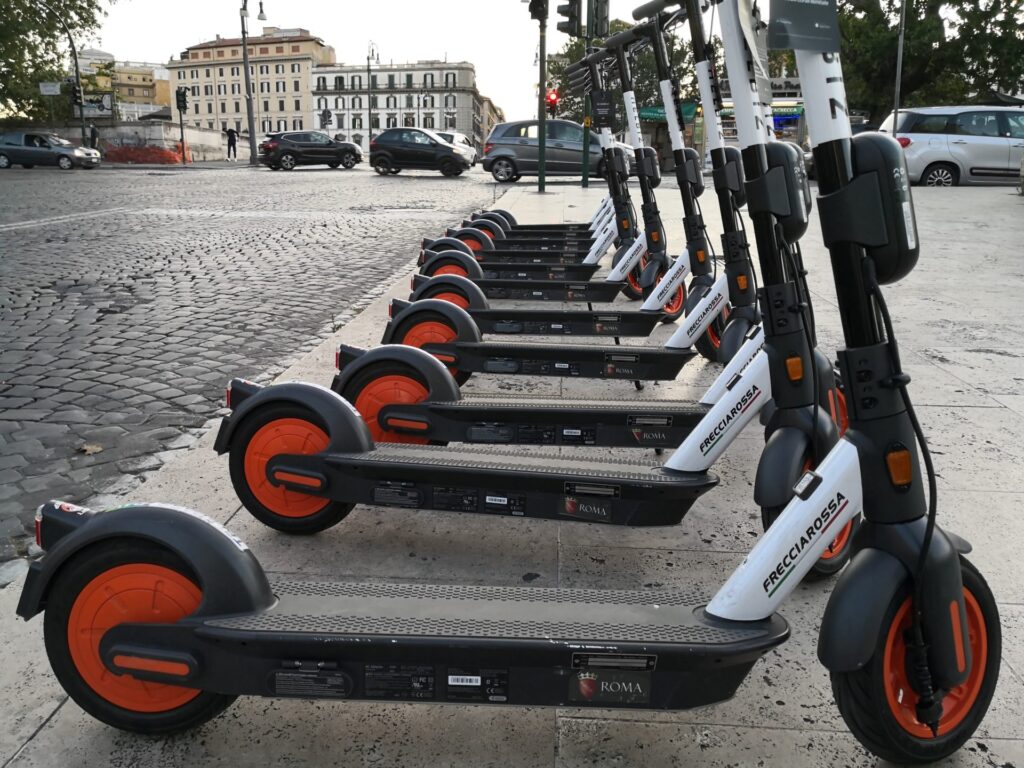
Where is it generally safe to park scooters in cities?
You can park a scooter in any designated scooter parking space in downtown areas, or along most streets in residential areas.
Designated Scooter Parking Spaces
Designated scooter parking spaces are generally outside. Usually, they will have room for less than a dozen scooters. However, for large events, sometimes you will see scooter corrals that offer a place for a large number of scooters and bikes to park and charge.
Sometimes, you will find designated scooter parking areas inside parking garages or even inside buildings.
Outdoor Designated Spaces
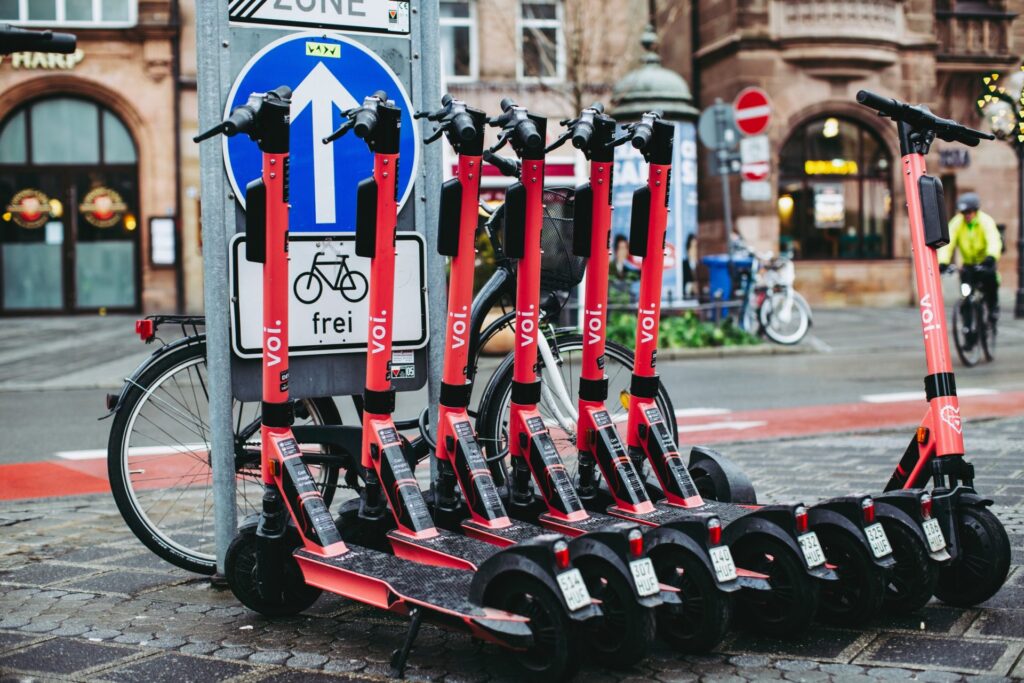
Indoor Designated Area
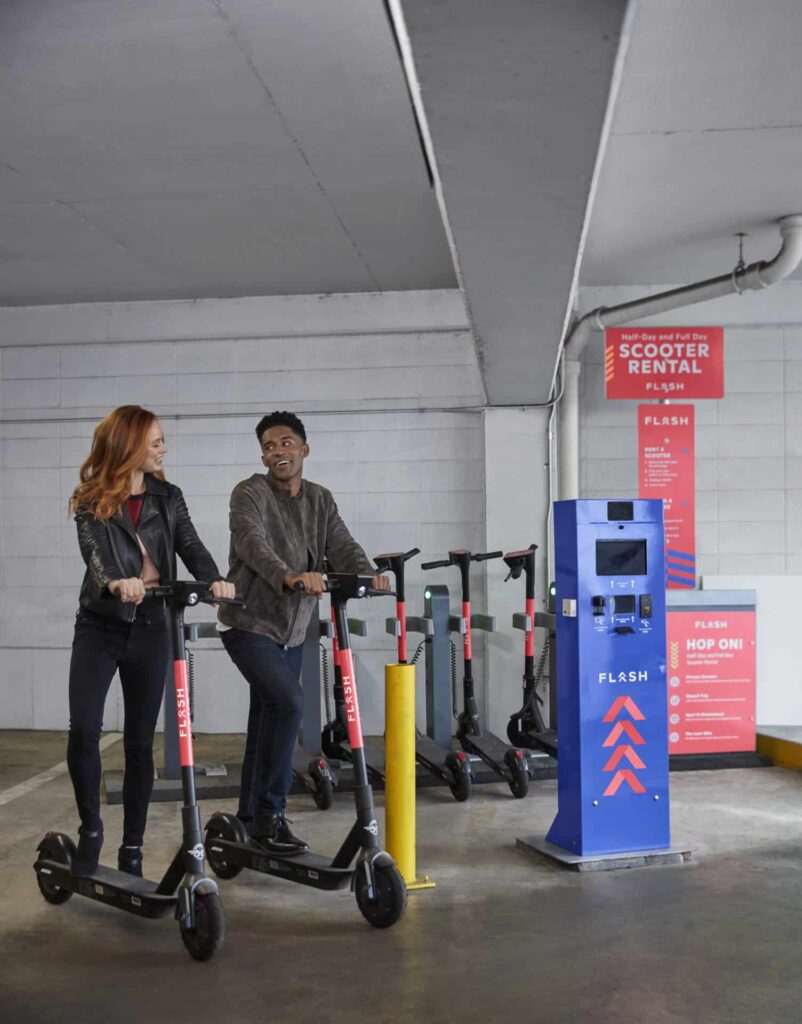
Bike and Scooter Corrals
For large events and festivals where a lot of attendees are expected to take eBikes and eScooters, bike and scooter corrals are a popular solution for managing the high volume of vehicles.
Dock-Based Parking Stations
In most urban areas today, scooters are taken from their parked positions and charged overnight by independent chargers. However, it is increasingly common to find scooter charging stations where the scooters can park and charge in a single location.
A parking area for scooters that holds them upright and offers charging onsite is called a dock-based parking station.
Charging the scooter while parked
With dock-based parking stations, charging a scooter is simple and more consistent. Riders won’t find a scooter that’s almost out of battery and scooter providers don’t have to rely on a network of individuals to charge scooters and bring them back.

Where can’t I park my scooter?
You can’t park scooters in places where they obstruct pedestrians or vehicles. In some cities, restrictions also prohibit parking anywhere outside of designated scooter parking spaces.
It is more common now than when scooters were first introduced to urban areas to interact with scooters that have to be picked up and dropped off unspecific places rather than picked up and dropped off anywhere.

